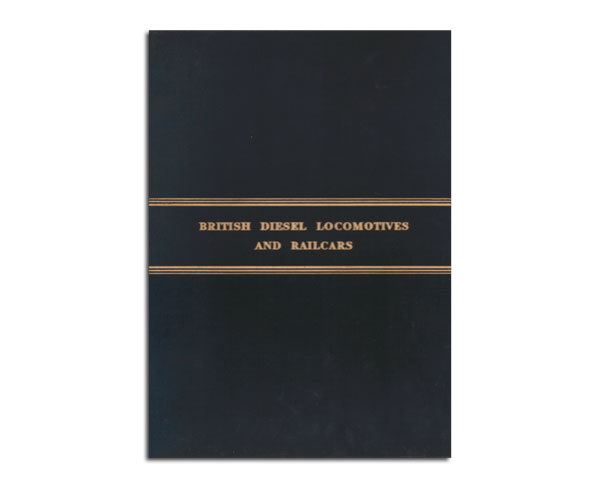Description
Hardback book, blue cloth, embossed gilt title, pp.48, with 76 B&W photographs of standard and narrow gauge internal combustion locomotives and railcars. Intended to help revive export markets lost during WW II, this nicely produced book features samples from all the well-known players in this market, and some less well-known, like Walkers of Wigan, or Harland & Wolff of Belfast, better remembered as shipbuilders.
It is something of an indictment against the British Transport Commission and the Railway Executive, that when this book was published, over 5 years after George Ivatt drove the first main line diesel LMS 10000 out of the Derby erecting shop, she and her sister, plus a handful of others remained the sole examples of this type of traction. The Commission and the Executive were at loggerheads over many things, but most damaging was the question of motive power.
The Commission wanted a staged transition from steam to diesel then to electric. The Executive, heavily influenced by Robin Riddles, argued that the capital expenditure for electrification could not be found for perhaps 30 years, that a move to diesel, largely untried in Britain and dependent on imported fuel would be a mistake. Meantime they were spending millions on building largely unnecessary new designs of steam locomotive, many of which would be headed for the scrapyard in little more than a dozen years.
The impasse was solved by a reorganization, which included abolishing the Executive, and paved the way for the 1955 British Railways Modernisation Plan. Alas! Another ill-thought through scheme, which would involve ordering penny numbers of locomotives from almost all the manufacturers in this book, for “evaluation” before placing bulk orders. The competitive nature of this process meant that corners were cut, unrealistic prices charged in the hope of securing a big order, and some highly unreliable prototypes put to work. The result was voluntary winding up or bankruptcy for several of the firms represented here. Only the specialized firms offering small and medium sized industrial type locos would survive a little longer.
Unbelievably, only weeks before the first Derby Lightweight DMUs went into traffic in 1954, Riddles was demanding funding to modernise steam push-pull working.
An interesting book, full of unusual machines built for overseas markets.

Reviews
There are no reviews yet.